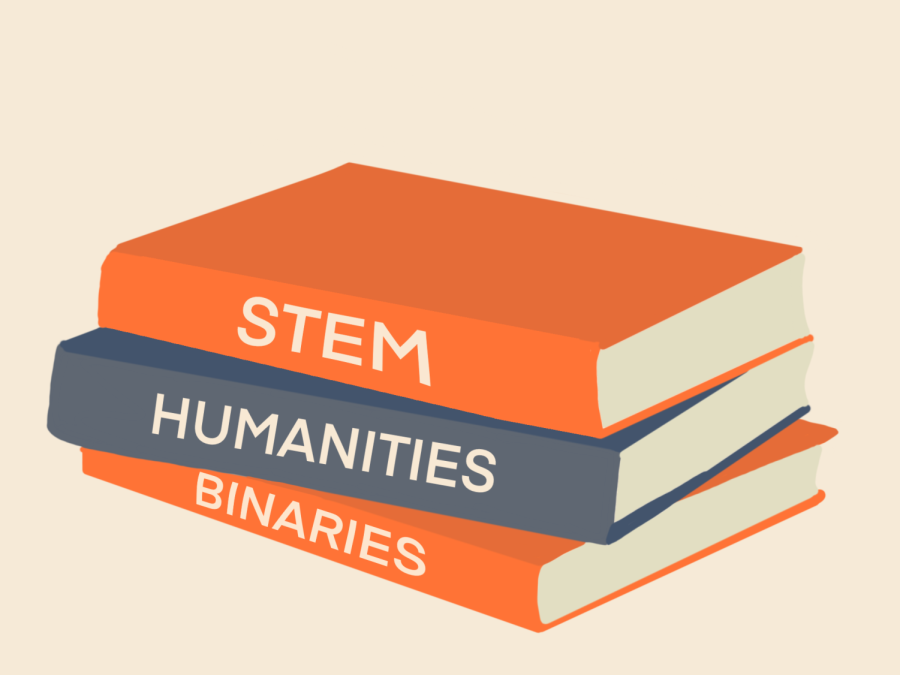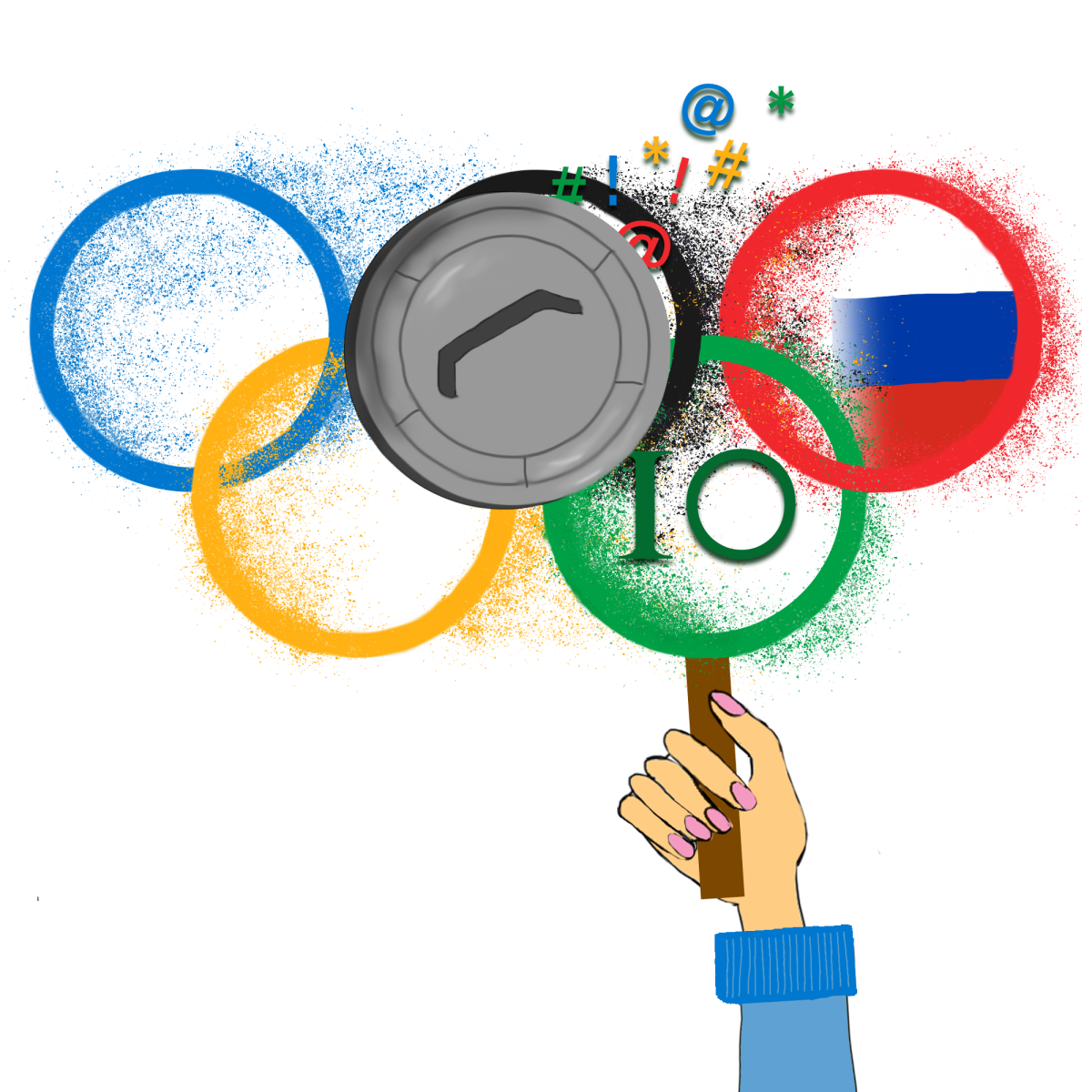Binaries at Monta Vista
Exploring HAmLit’s Patriot Act project and how MVHS subverts common binaries
February 11, 2022
For the past three years, Honors American Literature students have participated in the Patriot Act project, a critical investigation into a social or political binary. Binaries, defined by junior Trisha Sreedhar, are “the idea that there are only two opposing sides that exist on a certain topic.” The project attempts to teach students to think in terms of spectrums rather than binaries by having students “choose one topic [to analyze]” and “do a deep dive into the different sides that exist or lack of sides that exist in it” according to Sreedhar.
After students identify two opposing perspectives on their topic, they create a presentation explaining the existing binary, as well as possible ways to reevaluate that binary. Junior Clay Carson, who is studying the binary of gun control, describes one side of the binary as believing that guns are fundamentally dangerous and need to be controlled extensively, and the other as guns being fundamental to freedom and any attempt to control them is a violation of an individual’s liberty. Carson believes there is an opportunity for more nuanced views on a spectrum instead of these two extremes.
However, the Patriot Act isn’t the only example of challenging binaries. MVHS also challenges binaries in other ways. The Gender Sexuality Alliance (GSA) and Out for Safe Schools program encourage students to reconsider the gender binary by educating students about gender spectrums and the “Equity Deconstructed: Interdisciplinary Research” course attempts to reframe the STEM vs. Humanities binary by pushing students to conduct research projects that draw from multiple disciplines.
While MVHS is ranked the #121 high school nationally according to U.S. News, it is ranked #7 nationally for STEM. Despite this, senior Sylvia Li believes MVHS does a fair job of circumventing STEM vs. humanities binaries.
“Monta Vista subverts this binary because of the need to take difficult classes,” Li said. “[STEM] people will want to take difficult classes even if they are humanities. So even if there is a binary… high achieving students who want to get into a good college try to take classes in both [STEM and humanities].”
For example, Li herself took on both HAmLit and challenging science/math coursework. Li is now a writing tutor in Vennessa Nava’s HAmLit course.
“A lot of my friends took HAmLit and we learned about binaries together. We started talking about them and noticing them more around us and that class made us really break down the STEM vs. Humanities binary,” Li said. “After taking HAmLit, we realized we could be part of both of them.”
Sreedhar feels strongly about a different binary. For Sreedhar, the college admissions process creates binaries in student performance that are unhealthy.
“I hate the binary of what people think is a ‘good’ college,” Sreedhar said. “It just pits students against each other. Students have different goals for themselves and it creates an extremely toxic environment.”
 Sreedhar explained that binaries create stereotypes for a type of student. Echoing Carson’s claim, these stereotypes are stifling to student passion, and as a result, create a toxic environment. However by learning about binaries, students are better equipped to identify and dismantle common stereotypes.
Sreedhar explained that binaries create stereotypes for a type of student. Echoing Carson’s claim, these stereotypes are stifling to student passion, and as a result, create a toxic environment. However by learning about binaries, students are better equipped to identify and dismantle common stereotypes.
“It’s the idea of who’s smart or who’s dumb based on the types of classses they are taking or the activities they participate in afterschool,” Sreedhar said. “I think that’s extremely negative and it doesn’t allow people to do what they actually want to do, being a teenager.”




























